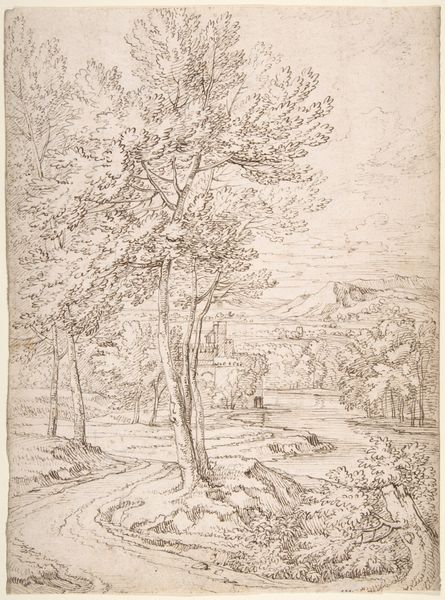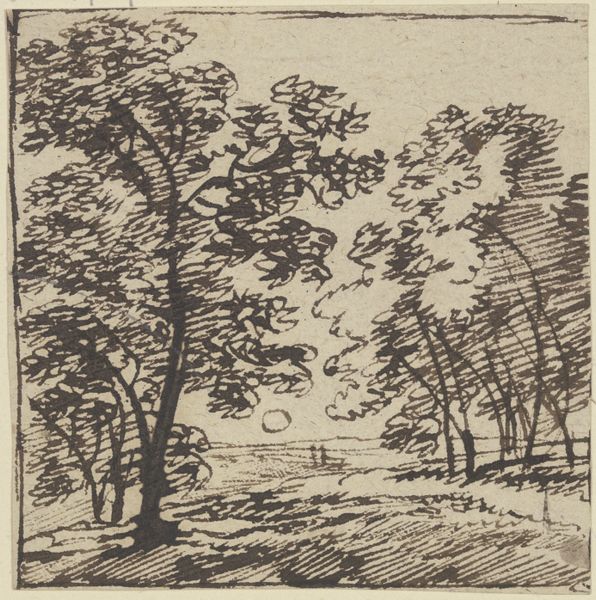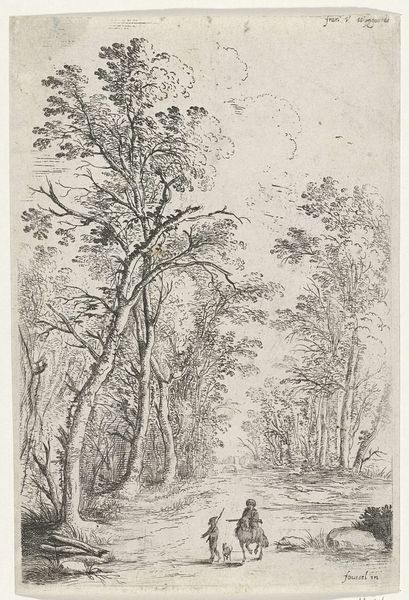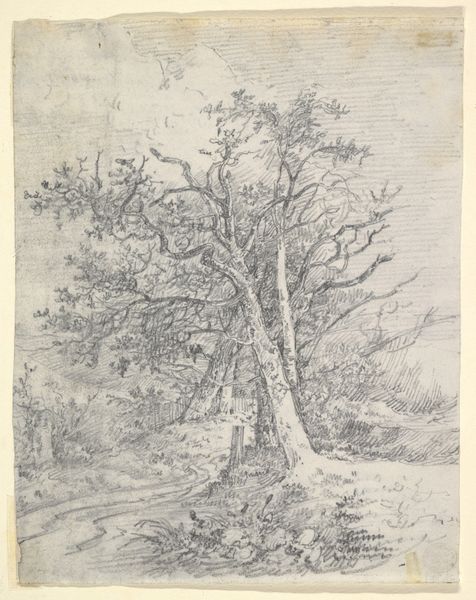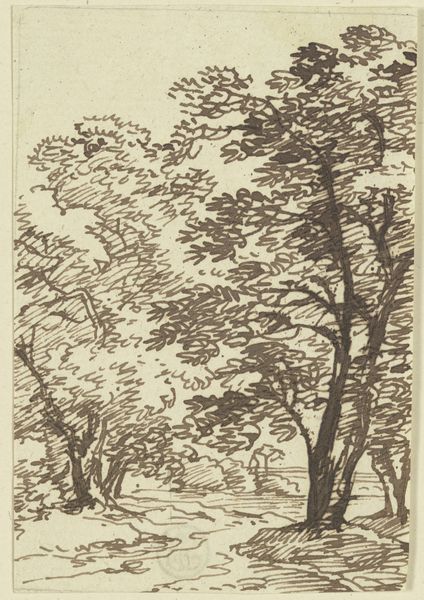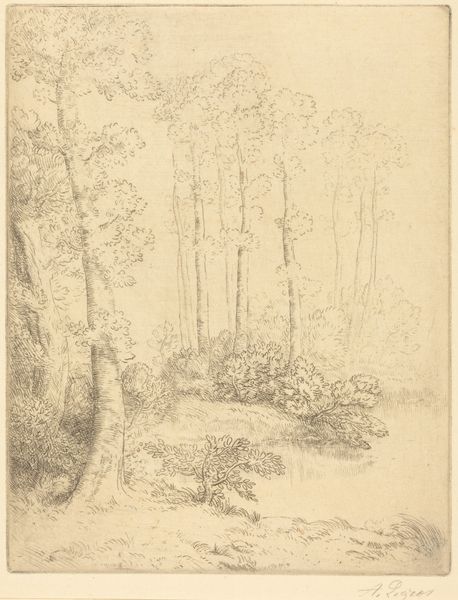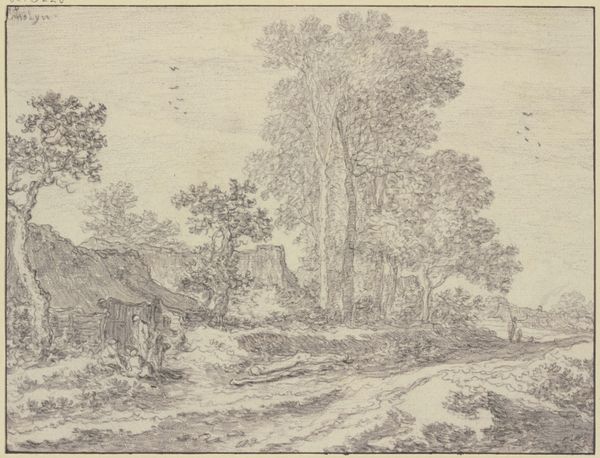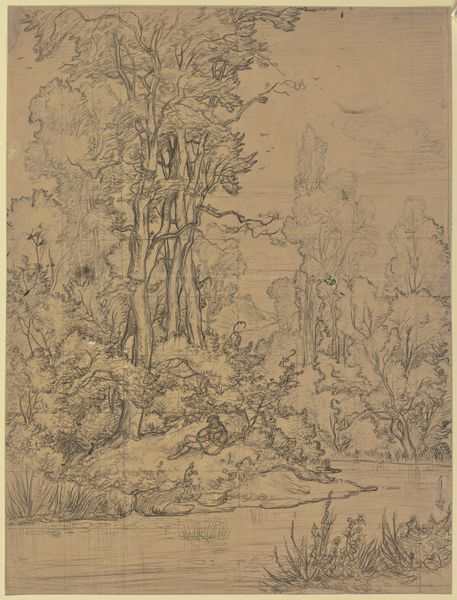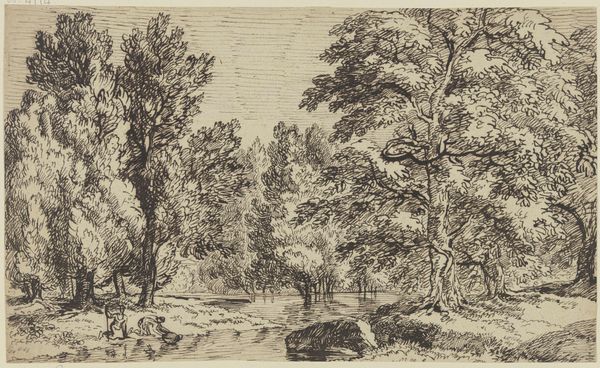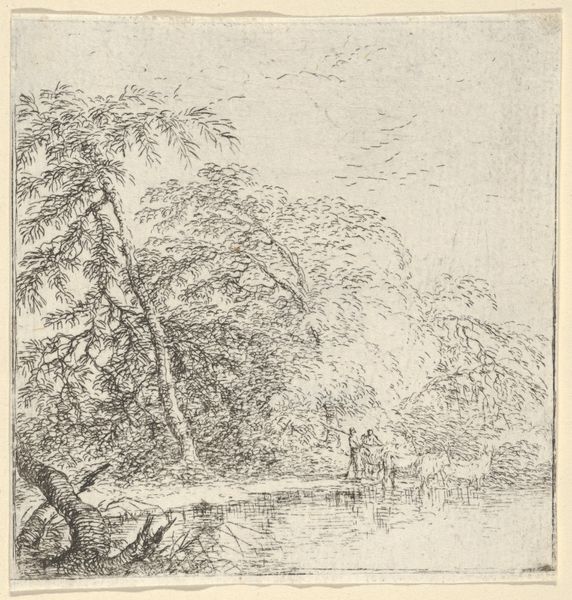
drawing, print
#
tree
#
landscape illustration sketch
#
drawing
#
pen drawing
#
mechanical pen drawing
# print
#
pen illustration
#
pen sketch
#
pencil sketch
#
ink drawing experimentation
#
pen-ink sketch
#
pen work
#
sketchbook drawing
Dimensions: sheet: 6 15/16 x 5 11/16 in. (17.7 x 14.5 cm)
Copyright: Public Domain
Curator: This delicate drawing before us is titled "Study of Trees," attributed to François Ryckhals and created sometime between 1600 and 1647. It’s currently held in the collection of the Metropolitan Museum of Art. Editor: The first thing that strikes me is its seeming ephemerality, as though a half-remembered dream. There's a hushed quality in the delicate pen work that’s really captivating. Curator: It's certainly evocative. Ryckhals, working in the Dutch Golden Age, presents us with what appears to be a dense forest. It raises questions about the human relationship with nature at a time of burgeoning colonialism and land use shifts. Were such representations also a form of claiming or perhaps celebrating newly controlled landscapes? Editor: Absolutely. We have to consider the social dynamics at play. Looking closer, one is drawn to consider not only *whose* land is being represented, but *how*. What do these delicate sketches say about early relationships with nature that are built on domination, even extraction? Is Ryckhals’ method here aligned to other early landscape depictions of the time? Curator: He likely would have drawn such studies en plein air, on site. Landscape wasn't quite a celebrated genre of its own yet. Studies like this were frequently incorporated into larger narrative paintings, often with allegorical or historical themes. So these arboreal portraits were frequently repurposed. Editor: Fascinating! I keep coming back to the lack of any human presence. Is this an intentional choice or is it commentary? It’s compelling in what is omitted. It perhaps inadvertently directs viewers towards focusing only on the natural forms. How does this emphasis—or perhaps imbalance—contribute to current, contemporary readings on land rights and landscape representations? Curator: I see your point. Certainly, the focus on the trees invites us to contemplate the environment. And of course, the absence of figures prompts a closer reading of the role that humans play within representations of nature. Ryckhals captures something essential here, perhaps a quiet observation amidst an era of profound societal shifts. Editor: Agreed. Ultimately, it leaves me pondering the enduring, complex narratives we weave around nature, representation, and ownership.
Comments
No comments
Be the first to comment and join the conversation on the ultimate creative platform.
